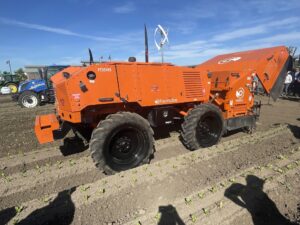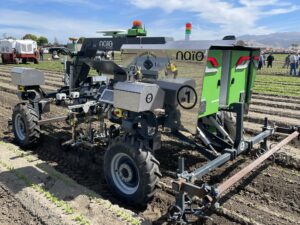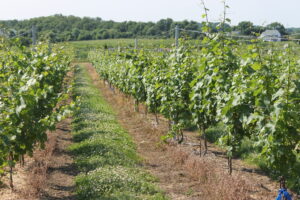
Several university weed scientists from around the U.S. (Clemson, Cornell, UC Davis, Florida, Michigan State, Rutgers, Arkansas) have developed a survey as part of a Specialty Crop Research Initiative (SCRI) planning grant (SC-2021-07806 DEVELOPING A NATIONAL TEAM TO OPTIMIZE NON-HERBICIDE WEED MANAGEMENT TECHNIQUES IN COLE AND LEAFY GREEN CROPS).
We would appreciate if you could share it with your constituents and cooperators (growers, crop consultants, extension personnel, industry partners) via newsletters, email blasts or other outreach efforts.
** WE NEED YOUR INPUT! **
 Weed management in vegetables can be difficult due to a shrinking labor pool, which is becoming more costly to source, and a lack of effective herbicides. Research and extension efforts must focus on integrating novel weed technology into current crop production systems. Autonomous and semi-autonomous robotic weed control technology has been implemented by some vegetable growers, mainly in the Western US, but is not universally available to or adapted by many producers. This survey is designed to new tools of interest (e.g. precision sprayers or cultivators, electrical weeders, drones, etc.) for managing weeds in cole crop and leafy green systems as well as the environmental, physical and economic barriers to adoption. The results of this survey will benefit vegetable growers by enabling the research team to develop relevant and realistic research efforts informed by the needs of and constraints faced by our local stakeholders. Specifically, we will use survey data to develop a multi-regional USDA grant proposal to bring grower-specified technology to each our states for evaluation and demonstration under a variety of commercial conditions and provide growers with an economic assessment of their performance relative to current best management practices.
Weed management in vegetables can be difficult due to a shrinking labor pool, which is becoming more costly to source, and a lack of effective herbicides. Research and extension efforts must focus on integrating novel weed technology into current crop production systems. Autonomous and semi-autonomous robotic weed control technology has been implemented by some vegetable growers, mainly in the Western US, but is not universally available to or adapted by many producers. This survey is designed to new tools of interest (e.g. precision sprayers or cultivators, electrical weeders, drones, etc.) for managing weeds in cole crop and leafy green systems as well as the environmental, physical and economic barriers to adoption. The results of this survey will benefit vegetable growers by enabling the research team to develop relevant and realistic research efforts informed by the needs of and constraints faced by our local stakeholders. Specifically, we will use survey data to develop a multi-regional USDA grant proposal to bring grower-specified technology to each our states for evaluation and demonstration under a variety of commercial conditions and provide growers with an economic assessment of their performance relative to current best management practices.
The survey is voluntary and anonymous. All replies will be de-identified. It should take less than 10-15 minutes to complete. The link is below.
https://clemson.ca1.qualtrics.com/jfe/form/SV_1IfwcgkAXC9i6h0
If you have questions, please feel free to contact Thierry Besançon, Associate Professor and Extension Weed Science Specialist for Specialty Crops, New Jersey Agricultural Experiment Station, thierry.besancon@rutgers.edu.

 ave an idea you would like to try on your farm that is related to sustainable agriculture?
ave an idea you would like to try on your farm that is related to sustainable agriculture? 